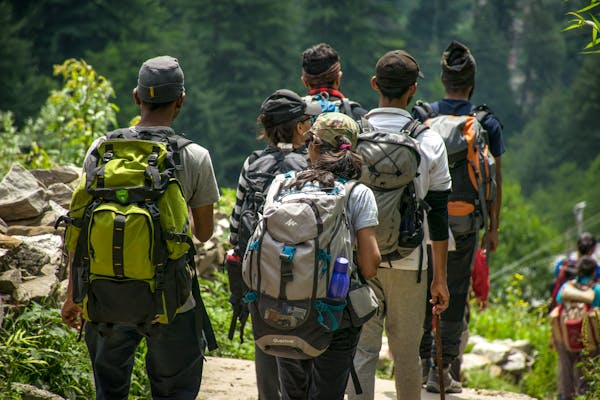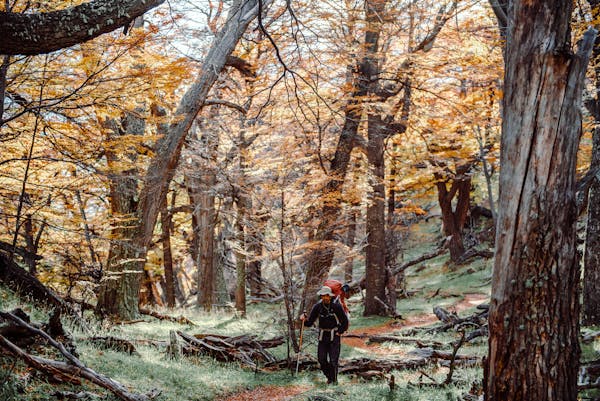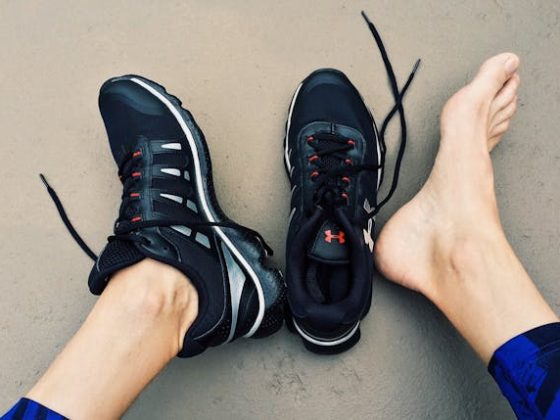Don’t think for a second that hiking tutorials are only for people that are just getting started. Even professional backpackers and adventure racers regularly take courses to expand their knowledge-base, and they’re almost constantly taking refresher courses to keep that information fresh in their minds. No matter what your skill level is, there are day-hike tutorials that can help you learn the skills you need to go on safely or do some of the biggest treks in the country.
What is Day-Hiking?
“Day hiking” refers to activities that can be completed within a single day, as opposed to extended excursions such as backpacking trips or thru-hikes. These outings range from strolls in local city parks to more challenging 4-hour ascents up nearby mountains. Whether a brief 2-hour tour or a full-day 12-hour trek, venturing outdoors and immersing oneself in nature can yield significant mental and physical benefits.
However, the required preparation and gear can vary between a 2-hour hike and a 12-hour one. Generally, the longer and more remote the hike and the more adverse the weather conditions, the greater the need for appropriate clothing, gear, food, and water.
Day-Hike Tutorials and Sources for Basic Skills:
At its most basic, hiking is really just walking around in the woods. While this is true, it is unwise to look at “walking around in the woods” in the same light as you’d look at “walking around in a city.” In a city, you can easily find a water fountain if you run out of water. You can also just get a taxi home if you get lost, or become too tired to walk anymore. In the woods, these realities get turned on their heads, making hiking tutorials a smart investment.
1. Hiking Packing Lists
If you’re interested in going on a day hike, the day-hike packing list at Hiking in the Smokys is a great resource. This will tell you everything that you need to do to pack for a fun day-hike.
Effective planning and preparation are essential before embarking on any outdoor excursion. A day hiker’s checklist is a valuable tool to aid your preparation, ensuring a safer and more enjoyable journey. Naturally, the hiking gear required varies depending on factors such as the length of the hike, the season, the destination, and the terrain.
Hikers must be ready to encounter various temperatures and weather conditions in the Great Smoky Mountains. Temperatures can fluctuate significantly with changing weather patterns, especially with elevation changes. Additionally, the Smokies are known for their high precipitation levels, with higher elevations receiving up to 90 inches of precipitation annually. Without proper preparation, unexpected storms could lead to considerable discomfort.
During the summer months, days typically start clear but often witness the development of clouds and frequent afternoon showers and thunderstorms as temperatures rise.
Winter in the Smokies offers unique beauty but also poses challenges. While lower elevations may experience mild temperatures, higher elevations can be significantly colder, with the possibility of snowstorms depositing up to two feet of snow.
Carrying gear and clothing suitable for various weather conditions when hiking in the Smokies is advisable. Dressing in layers and having rain gear in your backpack are prudent measures. Although not exhaustive, the following day, the hiker’s checklist (including a first aid kit) provides a solid foundation to ensure you have all the essentials for your hiking adventure. Feel free to customize the list based on anticipated conditions and your requirements. If you need more essentials, REI offers a comprehensive selection of hiking apparel and gear to meet your needs.
Essential Gear for Hiking:
Ensuring you’re equipped with the right gear is crucial for a successful hiking experience. This includes a suitable backpack, daypack, or fanny pack to carry your essentials. Appropriate clothing, such as a base layer made of polypropylene, mid to heavy-weight fleece or pile jacket, and rain/wind shells (both jacket and pants), is essential for comfort and protection against the elements.
Supportive footwear tailored to the length and terrain of your hike is vital, along with extra socks for added comfort. Remember wool or fleece hats, balaclavas, and additional clothing layers, especially thermal underwear, for cold weather hikes. Gloves, water containers, high-energy snacks, maps, compasses, emergency blankets, waterproof matches, pocket knives, flashlights or headlamps, whistles, watches, and personal identification are also must-haves for any hiker’s gear list.
It’s equally important to pack essential items for safety and well-being. A comprehensive first aid kit is necessary, including personal medications, moleskin for blisters, insect repellent, and sun protection (sunglasses, sunscreen, lip balm, and hats). Consider carrying toilet paper in a plastic bag for hygiene and ensuring you have money and identification for emergencies. This essential gear checklist will prepare you for your hiking adventure, providing a safe and enjoyable journey amidst nature’s wonders.

Suggested or Optional Gear
Consider bringing suggested or optional gear to enhance your hiking experience, such as trekking poles for stability, a GPS with spare batteries, and knee support for comfort. Hiking boots, bandanas, and disposable contact lenses or glasses for impaired vision are also helpful. Carrying a notebook, camera with extra batteries, and binoculars aids in documenting and observing nature. While cell coverage may be limited, having a phone for emergencies is advisable. Additional items like feminine products, water filters, gaiters, bear spray, zip-seal bags, and napkins further prepare you for trail situations.
A basic first aid kit includes personal medications, bandages, adhesive tape, antiseptic wipes, tweezers, scissors, gloves, and a thermometer. It’s crucial to customize your kit based on your specific needs and to keep items up-to-date and replenished. Keep your first aid kit in a waterproof container, and consider enrolling in First Aid and CPR classes to keep your skills current. Additional items such as tissues, plastic bags, a small mirror, eye drops, and various medications can further enhance your preparedness for emergencies on the trail.
2. Basic Outdoor Skills
Learning basic skills for the outdoors can end up being very helpful in everything from setting up camp to performing minor first aid. Learning how to tie knots effectively is one of the most important outdoor skills that you can have, and the animated knot tutorials at AnimatedKnots.com are a great resource. Also, the Mayo Clinic offers a free, fairly comprehensive resource on first aid that is very useful.
Two Advanced Day-Hike Tutorials:
Even if you are an old-hand in the outdoors, there is always more to learn. Even the greats like Andrew Skurka are always saying that you need to be constantly developing your skills. Not only does this help you to stay safe, but it helps you to get more out of your adventures. Some great resources are out there that can teach you:
1. Advanced First Aid
If you want to take your tutorials into the real world, then you can take a lot of classes through the National Outdoor Leadership School. The organization offers the most respected wilderness medical course in the world, otherwise known as the Wilderness First Aid certification.
Wilderness First Aid offers essential training for outdoor enthusiasts embarking on overnight or short-term wilderness excursions. Participants learn to identify medical emergencies, acquire basic life-saving skills, conduct patient assessments, and administer primary field care for common injuries.
The curriculum covers various topics, including patient assessment and emergency care, CPR and AED use, basic life support skills, patient assessment systems, patient reporting, and initiating emergency calls. Additionally, it includes treatment for musculoskeletal injuries with a focus on splinting and environmental medicine, covering illnesses and injuries related to temperature, lightning, submersion, and environmental toxins.
Participants also learn non-technical patient handling techniques, emphasizing spinal motion restriction when necessary and managing wounds such as lacerations, burns, and blisters. Practical skills taught include bleeding control, wound cleaning, bandaging, splinting, patient packaging, hypothermia management, and medical kit preparation. Moreover, the course addresses recognizing signs and symptoms of serious medical emergencies and adhering to WMA International wilderness protocols for treating conditions like anaphylaxis and managing wounds.
2. Advanced Backpacking Classes
Again, if you are interested in going to a physical class, there are a lot of options out there. For practical backpacking and hiking knowledge, you can always trust the classes at Venture North. The Mountain Walking Leader Course is a great example of what the company has to offer.
Make It a Family Event
Taking the kids out hiking with you is a great way to help teach them self-reliance and resilience, but it takes a little extra consideration to help ensure it goes off without a hitch. Remember that kids don’t stand up to the rigors of a long hike the same way you do, so you need to plan easier, shorter hikes when kids are involved.
To help understand how to best incorporate kids into your hikes, there are a few hiking tutorials you can use that cover this issue:
- 10 Tips for Taking Kids Hiking by the Wilderness Society is a very practical, common-sense guide to taking kids hiking with you. It lays out everything from how to encourage kids during a hike to how to select the right hike.
- Hiking with Children by Backpacking.net is a tutorial designed to help you to navigate the sometimes difficult process of getting children engaged with outdoor activities. As any good tutorial on taking kids hiking should, it includes rules for selecting hiking routes.

Conclusion:
The importance of hiking tutorials in the overall safety of your outdoor excursions simply cannot be overstated. The amount of skills and techniques involved with different aspects of hiking are many, and having an appropriate understanding of how to safely apply them is of paramount importance to the safety and fun of your adventure. Whether you are an advanced outdoor adventurer, or just getting started, there is always something new out there for you to learn. Improve your skills and enjoy safe hiking!




